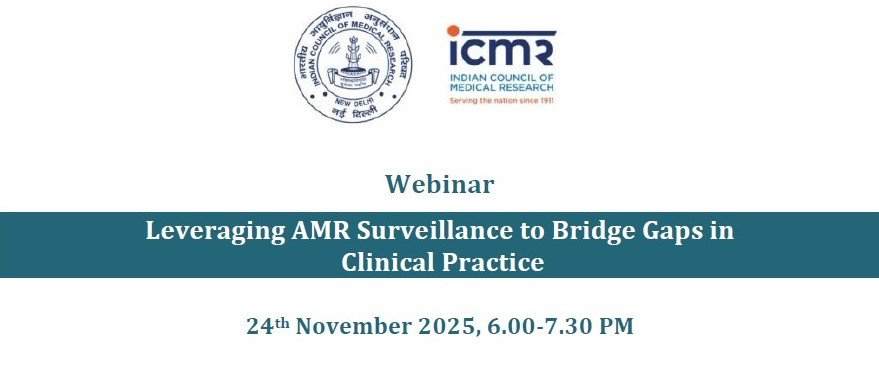Disclaimer: This post is for academic purposes only. Please read the original document if you intend to use them for clinical purposes.
This document summarizes the WHO’s strategic approach to Infection Prevention and Control (IPC), focusing on the development, implementation, and sustainability of National Action Plans (NAPs). It outlines a critical roadmap for countries to develop and implement robust IPC NAPs. Recognizing the immense suffering and burden caused by healthcare-associated infections (HAIs) and antimicrobial resistance (AMR), the guide emphasizes a systematic, 5-steps implementation cycle and provides 8-strategic directions for effective IPC at national, sub-national, and facility levels.
Themes:
I) Background:
- Significant Health Threat: HAIs, including those caused by antimicrobial-resistant organisms, continue to cause tremendous suffering to patients, families and health workers and pose a high burden on health systems.
- Response to Global Strategy: The guide is a complementary tool to the WHO global IPC strategy and the WHO Global Action Plan and Monitoring Framework (GAPMF) for IPC. These frameworks aim to reduce the risks and burden of HAIs and AMR.
- Target Audience: Primarily for individuals or teams responsible for developing/updating and implementing IPC NAPs, typically the national IPC focal point or a designated person(s) within the Ministry of Health. It also targets associated programs (AMR, patient safety, WASH), political leaders, accreditation bodies, educational institutions, partners, and civil society.
- Practical, Stepwise Approach: The guide’s purpose is to provide a practical, stepwise approach to the development and implementation of an IPC NAP and to outline a suite of tools, resources and inspirational country stories to help prioritize, cost, implement, monitor and evaluate NAP activities.
- Key Challenges Addressed: Acknowledges significant barriers such as budget restrictions, trained health care workers (HCWs) and high levels of turnover, and the lack of a designated IPC focal point.
II) The 8 Strategic Directions (SDs):
The guide emphasizes that effective IPC NAPs must align with the 8 SDs of the WHO global IPC strategy, which provide the overall guiding framework for countries. Each direction has specific key actions, indicators, and targets.
- Political Commitment and Policies (SD1): Focuses on establishing legislation/regulations, securing dedicated budgets, and developing costed NAPs. Targets include over 80% of countries having an approved NAP by 2030 and over 90% having a dedicated budget by 2030.
- Active IPC Programmes (SD2): Aims to ensure functional IPC programmes exist at all levels (national, tertiary, secondary, primary healthcare facilities), meeting WHO minimum requirements, including Water, Sanitation, and Hygiene (WASH) services.
- IPC Integration and Coordination (SD3): Stresses the importance of aligning IPC with other complementary national programs (e.g., AMR, patient safety, WASH, emergencies) to avoid duplication and maximize impact.
- IPC Knowledge among HCWs and Career Pathways for IPC Professionals (SD4): Focuses on developing national curricula (pre-graduate, in-service, postgraduate) for IPC professionals and all HCWs, and establishing clear career pathways.
- Data for Action (SD5): Emphasizes establishing and strengthening national IPC monitoring systems, HAI surveillance, and hand hygiene monitoring, with timely feedback mechanisms.
- Advocacy and Communications (SD6): Calls for developing and deploying national IPC advocacy and communications strategies, engaging local champions and the community.
- Research and Development (SD7): Encourages countries to develop specific national research agendas and priorities for IPC, funding and implementing relevant research projects.
- Collaboration and Stakeholder Support (SD8): Highlights the necessity of mapping national partners, professional societies, civil society, and international organizations, and encouraging multi-stakeholder activities.
III) The 5-Step Implementation Cycle:
The guide proposes a 5-step cycle of implementation that is foundational for successful IPC NAP development and execution:
Step 1: Preparing for Action: Focuses on implementation readiness, including identifying leads, establishing governance (committees, accountability), stakeholder mapping, and initial resource (human, financial, infrastructure) planning.
Step 2: Baseline Assessment: Critical for identifying existing strengths and gaps to create a tailor-made IPC NAP. Utilizes various WHO assessment tools. SWOT analysis: Recommended to identify “Strengths, Weaknesses, Opportunities and Threats” based on assessment results.
Step 3: Developing and Implementing the IPC NAP: Translates assessment findings into a detailed, SMART (Specific, Measurable, Achievable, Relevant, Timely) action plan with allocated budget and responsibilities. Multimodal Improvement Strategy: The IPC NAP should be based upon a multimodal improvement strategy, which includes system change, education, monitoring, reminders, and culture change.
Step 4: Evaluating Impact: Involves conducting follow-up assessments to determine the effectiveness and impact of the NAP, providing feedback for continuous improvement and global reporting.
Step 5: Sustainability: Focuses on long-term impact, securing continuous commitment, financial investment, and adapting the NAP based on ongoing evaluations.
IV) Integration and Coordination:
The guide provides detailed insights on integrating IPC with:
- AMR Programmes: IPC is the first pillar in preventing AMR. Integration requires joint leadership, collaborative surveillance of HAIs, AMR, and antimicrobial use, and alignment between IPC and antimicrobial stewardship programs.
- Health Emergency Preparedness, Readiness, and Response: IPC is vital during outbreaks and emergencies, requiring alignment of strategic plans, guidelines, surveillance systems, and training.
- Occupational Health and Safety: Crucial for protecting health workers from infections, requiring unified reporting, expanded IPC programs to all workplaces, and integration into inspection processes.
- WASH: Foundational for IPC, requiring multi-sectoral engagement, resource allocation for infrastructure and maintenance, and regular monitoring.
Conclusion
The WHO Practical Guide for IPC provides a comprehensive and adaptable framework for countries to tackle the critical challenge of HAIs and AMR. Its emphasis on political commitment, integrated multi-sectoral approaches, data-driven decision-making, and continuous improvement through a five-step implementation cycle, positions it as an essential resource for strengthening health systems globally. The country examples provided offer valuable lessons and demonstrate that while challenges exist, strategic planning, collaboration, and dedicated efforts can lead to significant and sustainable improvements in IPC.
Citation: Development and implementation of national action plans for infection prevention and control: practical guide. Geneva: World Health Organization; 2025. Licence: CC BY-NC-SA 3.0 IGO.









